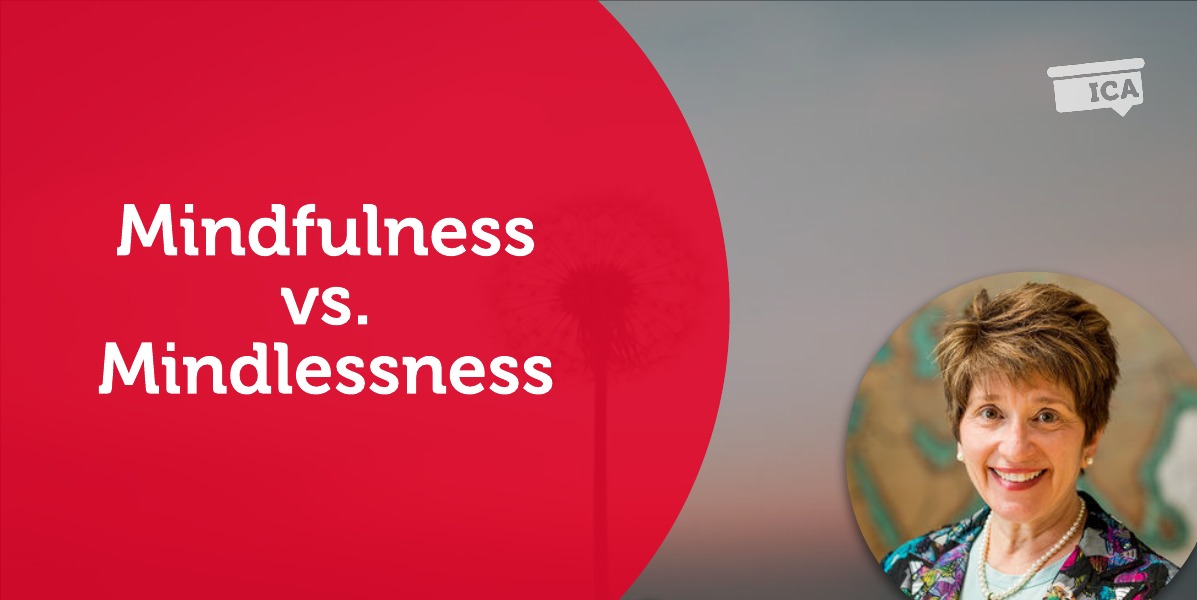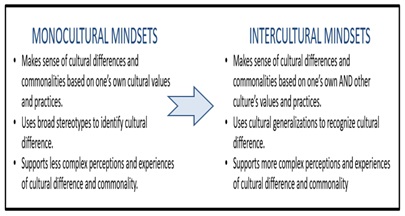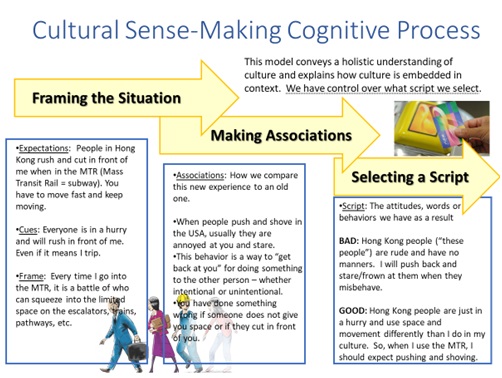A Coaching Power Tool Created by Elizabeth Tuleja
(Global Leadership Coach & Cross-Cultural Management Coach, CHINA)
One of the strengths of today’s increasingly diverse global workforce is the fact that diversity brings innovation, fresh perspective, and creative problem solving to the workplace. In order to utilize the variety of skills and perspectives employees bring to the table, managers and leaders need to examine their own frame of reference, or paradigm, through which they view the world. This includes becoming aware of their personal values, beliefs, attitudes, and norms for behaving.
This process of developing one’s self-awareness is called mindfulness, which is an important aspect of becoming a culturally intelligent – or CQ leader – in a world full of diversity. A lack of cultural knowledge and an understanding of how to apply the concept of mindfulness can limit both the leader’s and organization’s ability to develop its internal organizational culture as well as pursue international business opportunities.
Those who have the training and skills to work effectively with a diverse group of employees and partners – internally and externally – may find themselves in greater demand if they possess the following abilities:
Thus, the goal for developing better CQ through mindfulness is to move from having a one-dimensional mono-cultural mindset to forming a two-dimensional intercultural mindset.
What is Mindfulness?
Mindfulness is a metacognitive strategy that the culturally intelligent person must practice if she or he is to be successful in cross-cultural interactions. Mindfulness requires reflectively paying attention by monitoring personal feelings, thoughts, and actions. It allows people to make sense of cultural situations, events and actions within one’s frame of reference by removing a rigid or fixed mindset.
Mindfulness comes from Eastern spiritual traditions of meditation, which prompts a person to consciously observe and change one’s mental habits. This form of mindfulness considers mental, emotional, and physical states, which help an individual be in touch with internal thoughts and feelings in relation to external conditions. The goal is to focus on the present moment and be aware of those intuitive notions or ideas that come to mind and open new insights[1]. For example, if you are having negative thoughts and you want to rid yourself of the manifestations of those negative thoughts, you identify what might be causing the negativity and then focus on having a positive thought about that subject. Even breathing can be developed as a tool to help control negative distractions and build positive concentration. This enables you to become aware of such negativity in order to mindfully transform your thinking. In brief, you monitor what you are thinking and how this is affecting emotional, attitudinal, or physical well-being in order to respond and act in an appropriate manner.
What is Mindlessness?
The opposite of being mindful is mindlessness, like being on auto pilot[2]. With mindlessness, there is no need to think about what you are doing because it comes naturally and is accepted and expected—you certainly don’t need to question your assumptions because you expect everything to happen the way it always has[3]. This is called ethnocentrism, which blinds us to the multiple reasons and possibilities behind any situation or interaction). When someone only perceives the world from one framework, that person is exhibiting mindlessness.
Focusing on mindfulness over mindlessness can help people pay attention to what is happening and try to figure out why it might be happening. It helps us shift our perspective at the moment.
When dealing with a difference (e.g., if you are an ex-pat dealing with every-day life in a culture very different than what you’re used to; or if you work in your own country yet must manage people from many different cultural backgrounds and there is a disconnect bc of communication or expectations) we often:
- Employ a “Them vs. Us” mentality
- Are closed-minded
- Are judgmental
- Create stereotypes
Reflection
Creating Awareness through Mindfulness
Here are a few questions that could help in creating mindfulness instead of remaining stuck in mindlessness.
- How am I looking at this situation from my limited perspective?
- What might be other interpretations?
- How can I give the benefit of the doubt?
- What might be some cultural norms that have guided the person to act/communicate in a certain way?
Coaching Application
When you sense a client is viewing things through a narrow perspective, you can employ the Cultural Sense-Making Model to help them see things from a broader perspective. This helps the client become aware of perspectives that are mindless (focusing on one’s own interpretation) and move towards perspectives that are mindful (stopping to think about what other possible interpretations there might be).
Cultural Sense-Making Model
The Cultural Sense-Making Model is an excellent way to help us practice the ‘mindful’ or reflective way of seeing events from another perspective by withholding judgment. It encourages us to search for multiple meanings and seek confirmation when possible. It is a cognitive approach that helps us to organize and interpret information—away from that we can make sense of our perceived social reality—it is a form of mindfulness[4].
- The first step is framing the situation, which involves the expectations we have about a situation. Before, during or after an event, our minds are subconsciously feeding us information based on prior experiences. Our brains attempt to make sense of ambiguity by comparing past experiences to current ones – it resorts to default in order to confirm prior knowledge from which we create a frame.
- The second step involved is making associations, where we quickly analyze those cues and attempt to match them to a schema, or mental patterns that we create. These schemes are cognitive frameworks that help us to interpret unfamiliar information and experiences – as explained by cognitive psychologists. This is a natural process of learning about the world by making associations that are affected by our background, our experiences, our beliefs, and our attitudes.
- The third step is selecting a script, which we make based upon the frame we create and the mental patterns (schema) that we have deduced through our associations – this script becomes our road map to navigate the unfamiliar situation. Our script is often influenced by our previous experiences and we then draw similarities or differences between what we know and what we don’t know. Often we tend to react based upon our default, but the purpose of selecting a script is to help us take control so that we look at issues with an open mind...and positive intent.
If we are aware of how our brains pull us back into a default system (of what we previously know), then we can consciously try to monitor our perceptions, reactions, and actions in order to be in control of the script we choose – we don’t have to respond negatively but can withhold judgment and seek to understand the variety of cues (and miscues) in order to react appropriately.
Instead of getting stuck by only analyzing things through your previous experiences, you can use the following questions to help you think more broadly – taking those previous experiences and framing them within other contexts:
- Give the benefit of the doubt.
- Think about values, beliefs, and cultural cues.
- Consider what values and beliefs could have motivated the behaviour?
- Consider the possible POSITIVE intentions.
The following example demonstrates how one might react (negative versus positive script) to a frustrating situation. It’s important to remember that each person has control over what script they select.
Conclusion
Anyone can develop their CQ, or cultural intelligence by becoming aware of their personal values, beliefs, attitudes, and norms for behaving. This comes through the practice of mindfulness where you move from having a one-dimensional mono-cultural mindset to forming a two-dimensional intercultural mindset.
Sources:
[1]Baer, Ruth A., Gregory T. Smith, Jaclyn Hopkins, Jennifer Krietemeyer, and Leslie Toney, (2006), “Using self-report assessment methods to explore facets of mindfulness”, Assessment 13 (1), 27–45.
[2]Burgoon, Judee K., and Ellen J. Langer, (1995), “Language, fallacies, and mindlessness- mindfulness”, Communication Yearbook 18, 105–132.
[3]Thomas, David C., and Kerr Inkson,(2009). “Cultural Intelligence: Living and Working Globally”, (Barrett-Koehler; San Francisco, CA).
[4]Bird, A., and Joyce S. Osland, (2006), “Making sense of intercultural collaboration”, International Studies of Management and Organization 35 (4), 115–132




